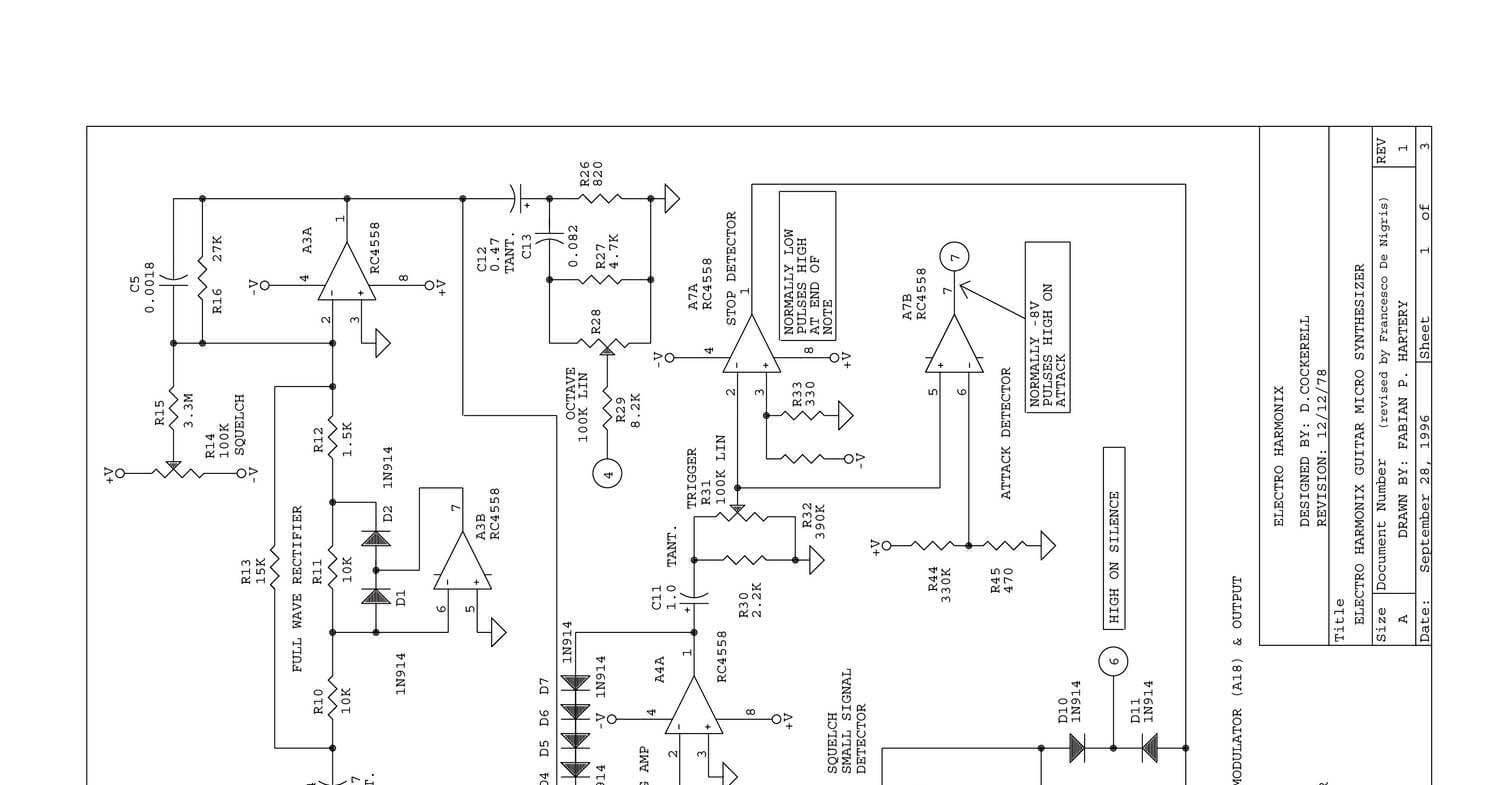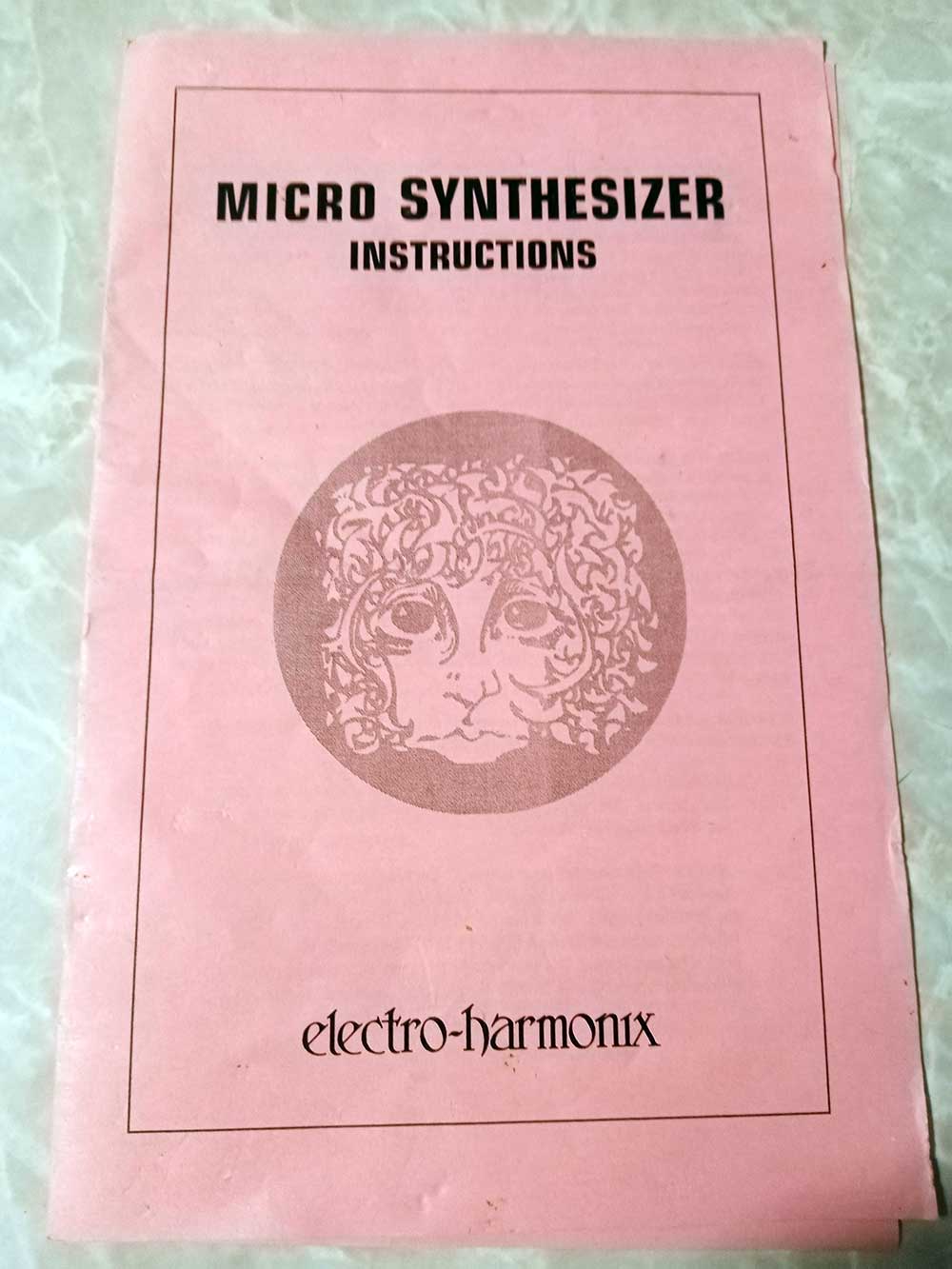
”Imagine having, in a single pedal, a versatile fuzz, an autowah, a filter, and a reverse effect, all analog and housed in a sheet metal case, 20 x 15 x 5 cm.
Daniele Pieraccini
This is Electro-Harmonix's legendary Microsynthesizer, which allows you to mimic the fat tones of vintage synthesizers like Moog, Oberheim and ARP by connecting a guitar, bass or any other instrument.
Imagine having, in a single pedal, a versatile fuzz, an autowah, a filter, and a reverse effect, all analog and housed in a sheet metal case, 20 x 15 x 5 cm.
This is Electro-Harmonix’s legendary Microsynthesizer, which allows you to mimic the fat tones of vintage synthesizers like Moog, Oberheim and ARP by connecting a guitar, bass or any other instrument.
Like many other Electro Harmonix pedals (see Small Stone and Electric Mistress), the Micro Synthesizer was developed by David Cockerell, an electronic engineer and designer previously involved in the world of synthesizers (his is the Synthi VCS3, among others) and a few years after a sampler designer at Akai, before returning to Mike Matthews‘ New York company.
The Versions
V1
The first version of the Micro Synthesizer comes out in 1979.
This model does not have an on / off switch on the back and the foot pedal activation switch is located on the left side. Unlike later versions, there is no LED and the square wave is labeled as distortion.
Electro Harmonix presents it with two printed circuits one on top of the other (like the V2 and the V3). One for the core circuit and another which contains the sliders and connects the controls to the motherboard.
V2
The second version came out in the 80s, first with an on / off switch on the back and an LED. The footswitch has moved to the right but, like the original Micro Synthesizer, the V2 has a power supply built into the chassis.
V3
In the following decade, EHX introduces the third version of the pedal, using the same components as the previous ones. In the meantime, however, Panasonic stops the production of the analog chips used, which forces Mike Matthews to buy all the remaining stock of the aforementioned components for this reissue and then suspend production once the stock is exhausted.
Version 3 is the first with a separate 24v power supply.
This is the version of the pedal I used.
In the same period, the first version of the pedal for bass was also launched. I must add that, despite being mainly a bass player, I have never tried it and never felt the need, satisfied with the normal version in my possession.
V4 XO Micro Synth
Another decade and here we are at the version still on the market.
This is a drastic overhaul project, presented in a smaller metal box than the originals and with a 9v connection, features that make this edition more suitable for pedalboards.
However, the build quality of EHX products has dropped considerably in the last twenty years, with a tendency to economize and with questionable design characteristics.
The circuit is assembled with surface mount technology (SMD).
La V3 reviewed
I Suoni
Some differences emerge from the comparison between the various versions. Based on personal experience and the testimonies collected online we can say that:
The first two versions have a fantastic, very warm and powerful square wave sound.
The sub-octave is instead weak, tracking and bypass by today’s standards are partially satisfactory.
Version 3 has a less heavy distortion but offers a more present and enveloping sub-octave. Tracking and bypassing have definitely improved.
The most recent version, Micro Synth XO, has the most powerful sub of the others and the advantages mentioned above related to the housing in the pedal board and the practicality of the 9v power supply, but has a decidedly weak distortion (square wave) and perhaps no longer definable as fuzz. Furthermore, some people complain of a lack of sustain unknown to vintage models. The lower voltage certainly affects the fullness of the sound.
Controls
A trimmer on the back of the pedal allows you to set the sensitivity of the unit for single coil or humbucker pickups, while all the important controls are located on the front, in the form of sliders.
These are divided into two groups, voice mix and filter sweep, as well as a couple of sliders to adjust the attack of the note and the level of the signal that activates the effect (trigger).
In short, the voice section is made up of a sub-octave; a “clean” signal, actually very dry and colored by the pedal preamp; an Octavia-style octave by Roger Mayer and a very vintage fuzz square wave. These four controls can be mixed in parallel at will, even if only the clean signal tolerates the playing of chords without degenerating into somewhat irregular distortions.
The attack decay control allows you to intervene by automatically increasing the volume and generating effects of strings and sounds reproduced in reverse from some tape in a sixties studio.
The filter section has four other controls: resonance, starting frequency, stop frequency and rate, which adjusts the speed of passage between the previous two.
With this pedal it’s possible to obtain a very wide range of sounds, from moog to fretless bass, from upside-down solos to more intense fuzzes, from “vocal” filters to other oddities that are difficult to reproduce by other means. The timbres obtained can find a place in vintage musical genres such as in rock, electronic, techno or hip-hop contexts.
The Flaws
- The analog circuit excludes the possibility of having presets (I found a remedy for this by preparing templates to store favorite sounds, as was done with vintage synths, in fact).
- Single notes are definitely to be preferred if you want to avoid sudden “squeals” or disappearances of the sound.
- Depending on the settings used, the tracking may not always be reliable: for this and for other reasons the technique and the touch are fundamental and must be adjusted according to the sound used.
- The background noise and the quality of the bypass are two other negative points cited by many. With the model in my possession, I never felt much the first one, regarding the bypass the quality is not optimal and I preferred to insert the pedal in an effects loop. This solution also offers other advantages, for example that of mixing the clean signal with that processed by the Micro Synth.
Il Micro Synthesizer
A weird wild thing but with warm, credible and convincing sounds that, combined with its enormous versatility, make the game really worth the candle.
Ask for info at Beck, Korn, Strokes, Van Halen, Muse, Sonic Youth, Parliament / Funkadelic, Red Hot Chili Peppers, just to name a few of the admirers of this jewel.
The audio tracks of the demonstration video were performed with:
Guitar – Eko 100
Bass – Westone Spectrum
Electro Harmonix Micro Synthesizer V3
Mixcraft amp, reverb and delay simulation
Demo of the Micro Synthesizer sound
WATCH and LISTEN to the video of the demo song created by Classic2vintage with the sounds of the Micro Synthesizer V3


















